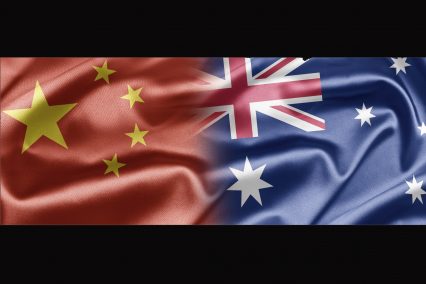One market that has proved strong throughout the first year of global market mayhem is Australia. Rich in natural resources, supported by strong and relatively baggage-free domestic banks, and with an expanding China sucking in its exports, the country seemed living proof of the de-coupling theory, writes Helen Castell.
“Australia’s trade finance market is weathering the storm,” says Michael Wood, senior manager, structured trade and risk, international products at Westpac Banking Corporation. Although not immune from the effects of global markets, a relatively buoyant domestic economy and a strong financial sector – in which many local players carry a AA rating – is helping it withstand them, he says.
“Overall, the Australian trade finance market is operating business as usual,” says Chris Boadle, trade finance sales for Southeast Asia and South Asia at JPMorgan treasury services.
Although global credit constraints and liquidity tightening are finally being felt in Australia, trade finance, particularly for exporters, is still quite strong, with most banks in the market continuing to offer customers risk coverage against quality banks and counterparties, he adds.
However, while Australian banks are looking resilient, recent weeks have seen falling commodity prices, tightening credit markets, a slowdown in consumer spending and housing construction, and a low A$/US$ exchange rate, notes Michael Dowling, head of trade and supply chain finance at National Australia Bank (NAB). These factors are expected to produce a slowdown of both import and export trade which could gather pace in coming months, especially in sectors subject to discretionary consumer spending, he argues.
Ultimately though, Australia seems to be having a better time of the current mess than most markets and, unlike in the US, no one is predicting Armageddon.
Cushioning effect of China and commodities
Commodities and China are the key factors lying behind this resilience. Minerals, fuels and food products comprise nearly half of Australia’s export sales, while East Asia – including major trading partners Japan and China – also account for more than half, notes Wood. For imports too, Australia is a major buyer of manufactured goods, with East Asia again home to its biggest trading partners.
Australia’s close and growing relationship with Asia has provided “somewhat of a cushion,” particularly for commodities, says Alan Huse, head of working capital solutions at ANZ. Up until October, Australia’s exports had grown around 20%, he notes. Commodities, mining and metals exports were expanding even faster, with a large proportion going to Asia and especially China, while both volume and price growth more than outweighed the same period’s Aussie dollar appreciation.
Outside drought-affected areas, Australian commodity producers and exporters are enjoying “excellent terms of trade,” says Boadle. For the upcoming contract year, coking coal producers have negotiated up to 200% price increases from key North Asian and Indian steel-producing customers, and even higher for spot sales. Contract prices for sales of iron ore to North Asia have meanwhile leapt to around US$90 per tonne – around 50% up on last year’s record.
Gold, base metal and LNG exports also boost Australia’s balance of trade, while wheat and grain markets are strong on the back of increasing demand and returns, plus proximity to offshore markets, he notes.
“With consistent supply channels and a close proximity to the burgeoning Asian markets, it is difficult to foresee any long-term downturn to the insatiable demand for Australian resources from key markets in Asia.”
“China has been a standout export market for our resource companies,” for iron ore and coal in particular, says Dowling. “However, we are now seeing a slowdown in exports to China, as evidenced by falling commodity prices – due no doubt to the current world economic conditions.” A recent weakening of the Australian dollar has partially offset this though, he notes, making all the country’s exports appear cheaper.
It is important to remember the relationship between Australia’s natural resource and agribusiness markets and global economic growth, adds Huse. “In the past four years we have seen strong growth, particularly from China, which has created significant infrastructure and productivity gains in these sectors. In recent times, global economic growth has slowed, which in turn has created a slowdown in the local Australian market.”
One commodity throwing up new opportunities for trade financiers is wheat, where deregulation could create new export customers for banks.
From July 1, 2008, the bulk wheat export accreditation scheme came into effect, opening up Australia’s wheat export market to a wider array of exporters.
“For trade finance banks, the greater number of players in the market allows for some new opportunities,” says Wood. “We are for example seeing more demand for grain financing structures that support the working capital needs of the various exporters.”
“Clearly more competition will result as both local and offshore market players position themselves,” says Dowling.
Importers struggle with costs
Not everyone is faring so well. Compared with cash-rich commodity exporters and brokers – which rarely have trouble obtaining bank support if needed – importers that rely on sustained credit support are being squeezed in the current climate, says Boadle. As banks’ cost of credit has increased, and availability become harder to obtain, many importers with tight cash flows have seen their costs grow, he notes.
Among sectors too, those more heavily exposed to the US and European economies, along with more capital-intensive industries that are more exposed to financial leverage, will feel the biggest impact, says Huse.
“There is no doubt that companies that are highly leveraged in the current climate are experiencing higher borrowing costs as a result of tightening credit markets, which flow through to lower profitability,” adds Dowling. “And unless the higher costs can be passed on to end buyers I would expect to see more corporate failures.”
Corporate failure is “always a possibility,” says Wood. To help identify vulnerable companies, “solutions are being built based on an ability to identify and monitor transaction triggers with key assessments around supplier performance risk and buyer payment certainty.”
Pricing on Australian debt has not leapt up as far or as fast as in many other markets – although that gap is starting to narrow.
“Reflecting market conditions, pricing is trending upward as demand for credit use grows and banks themselves are paying more for funds,” says Wood. “The impact is not limited to funded lines, with letter of credit confirmation pricing increasing also.”
Higher risk and rising margins are not of course always bad news for trade financiers.
Until recently, the shift towards open account financing in Australia had been dramatic. According to East & Partners research, as of September open account trade was being used to fund up to 43% of trade deals in the corporate or middle market, and nearly 70% among the country’s biggest 500 companies. This compares with just 12% for the middle market recorded in February 2004.
Open account financing helped bank lines absorb the ballooning size of facilities as commodity prices continued their upward march.
However, with the sudden shift away from open account financing, Australian corporates find themselves facing new pressures.
As well as increases in the cost and availability of debt, Australian traders already cope with shipment times that are generally shorter than from European and US markets, placing pressure on inventory management as well as working capital requirements, says Huse.
“There is an increasing awareness in the market of the attractiveness of supply chain financing solutions – taking open account financing to the next level of sophistication,” he says.
“Extending this further, the ability to provide a supply chain solution, both in a financing and cash management sense that goes cross border into the Asian region will be an attractive development for many Australian importers and exporters.” ANZ is working to strengthen its offering here.
As funding costs increase, many Australian corporates are looking to improve their working capital management, creating a new demand for supply chain finance solutions, adds Boadle.
“Granted it’s slow coming, to the extent that a lot of these big corporates think that they manage their working capital pretty efficiently already,” he says. But as credit becomes more expensive, “now they’re going to have another good look.”
Fresh look at working capital management
By combining the physical trade element with the supply chain, JPMorgan provides its clients with more visibility and control over their payments, Boadle says. Logistics management services can include anything from using specialist software to accurately audit a company’s freight costs to having consultants undertake a complete review of a company’s supply chain process, he explains.
Deal flow has been steady as thin debt capital and securitisation markets persuade more companies to seek out working capital or cashflow solutions in relation to their payables, inventory and receivables, says Westpac’s Dowling.
“From a structure standpoint we are seeing larger corporates interested in exploring off-balance sheet working capital solutions that can provide alternatives to a traditional securitisation programme.”
Solutions popular among Westpac customers include payables solutions, whereby a bank customer, in exchange for receiving longer payment terms from a supplier, will facilitate that supplier in approaching Westpac to finance the amount payable by the customer, says Wood. “The supplier in turn receives his cash earlier and so the normally competing objectives of buyer and seller are both satisfied.”
As the new wheat and grain season approaches, more companies are also seeking inventory finance, he says. Such solutions allow the corporate to source finance and match that finance to the holding period of the grain. As the banks are holding a marketable commodity, the facility pricing is competitive and compares favourably with other forms of available funding, he notes.
By aligning trade transactions to specific events in the working capital or supply chain cycle, banks can identify the status of the underlying trade transaction and the collateral supporting the transaction at any particular stage, he says. And this enhances the transaction risk profile from the bank’s perspective.
All banks interviewed say they are working to develop solutions to help Australian trade clients navigate their way through the current global climate. But what does it really mean to be an Australian importer or exporter, what unique needs do they have compared with their US, European or emerging market rivals, and how well are banks really responding?
“Australia’s main exporters are truly global players,” says Huse. They rely heavily on banks to understand their business needs as well as environmental, political, social and financial issues. Australian banks with strong presence in developing regions are able to meet this challenge and deliver workable solutions and products.”
“With a significant presence in the Australian market, the typical Australian exporter may be characterised as a small or mid-sized business,” says Wood. “With growth achieved through new markets, these companies are exposed to risks, and research suggests that those risks are not being managed as well as they ought.”
Research by East & Partners suggests banks aren’t doing a bad job – although there are clearly identifiable holes in their product offering.
“Larger, top 500 companies want to see greater effort being made in bolstering e-trade platforms,” says Zoran Knezevic, its financial markets analyst. “There is a visible gap between the customer expectations in this regard and what they are experiencing currently – this is, very clearly, an area for improvement among providers.”
Middle market and SME customers meanwhile place a large emphasis on liquidity support – and trade loans are quite important to these customers, he says. Middle market customers are also looking to cut down on their administrative burden associated with documentary products, one reason behind the shift in recent years towards open account trading.
Australian trade clients certainly have a full gamut of banks to choose from, with most of the international names – plus an arsenal of strong domestic banks – present, willing and largely able.
“We are seeing some of the global banks rethink their position in the Australian market,” says Wood. “For Westpac and other domestic banks this provides opportunities as support that was previously delivered by European and American banks may now be sought from an Australian bank.”
Apart from the likely merger of St George Bank with Westpac, expected later this year, there has been “no perceptible change” in the line-up of trade banks in Australia, argues Dowling. “Both banks are involved in trade finance and I would expect there to be some rationalisation to follow that will affect some customers, especially in the middle market segment.”
While banks in Australia cover all sectors, each appears to focus on specific market segments, says Knezevic.
“ANZ, for instance, has a substantial market share from the top 500 down to the SME market, but its footprint is greatest in the top 500 segment, where it accounts for more than a quarter of primary relationships,” he says. “There is a visible correlation between ANZ’s market share and its customer satisfaction performance in the top 500 market. The bank stands out as the market leader in satisfaction in 15 out of 20 service areas covered in East’s research.”
“NAB, the other leading domestic provider, appears to be focused on the SME and the middle market, and it’s the market leader in terms of share of relationships in both these segments,” Knezevic adds. Rated highly by corporates in almost all the twenty areas East & Partners sought their opinion on: “NAB’s service performance in the middle – or corporate – market is especially good.”
For SME and corporate segments, NAB also comes first in terms of satisfaction with trade loans, an area that is critical for customers in these markets, he notes.
Among international banks, HSBC and Citigroup appear to lead. “They have solid primary market share but are especially visible as secondary market providers,” a factor that is important given that more than two out of three customers use a secondary trade financier, says Knezevic. The two also “appear to have a particular strength in e-trade solutions in the top 500 market, and leave the rest of the market some distance behind when it comes to customer satisfaction with e-trade platforms.”
The challenges faced by banks in Australia may not be as great as those in the US and Europe, but the coming months and possibly years may be testing. Debt is expensive, and this is will be a double-edged sword for banks. But with fewer options out there, corporates will rely increasingly on trade banks to help them manage their cash flows. And while commodities prices are now falling, in the longer term the world’s energy and food needs can only climb – putting Australia in an enviable position.





